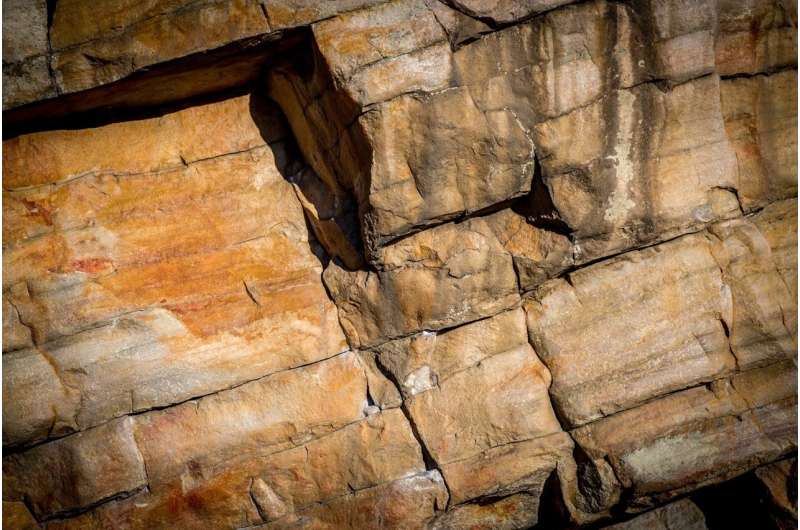January 27, 2023 report
This article has been reviewed according to Science X's editorial process and policies. Editors have highlighted the following attributes while ensuring the content's credibility:
fact-checked
peer-reviewed publication
trusted source
proofread
Assessing weathering conditions around the globe to understand rate-limiting factors for major rock types

A quartet of researchers at Pennsylvania State University has assessed differing weathering conditions around the globe in an attempt to better understand the rate-limiting factors for major rock types.
In their paper published in the journal Science, S. L. Brantley, Andrew Shaughnessy, Marina Lebedeva and Victor Balashov describe comparing experimental results with tests conducted in the real world to learn more about how much carbon dioxide is pulled from the air by rock weathering. Robert Hilton, with the University of Oxford, has published a Perspective piece in the same journal issue outlining the work done by the team on this new effort.
Prior research has shown that as rock is exposed to natural weathering elements such as heat, cold, wind, rain and ice, it releases minerals that eventually sequester atmospheric carbon, but the amount has been difficult to measure. In this new study, the researchers carried out testing at a large number of sites to estimate global carbon dioxide sequestration.
When carbon dioxide gas comes into contact with wet rock, carbonic acid is formed. Over time, it leads to the creation of soluble minerals and bicarbonate, a type of carbon. Such products slowly make their way through rivers, streams and groundwater to the ocean, where the minerals and their carbon are locked away. This process has been going on for millions of years, the researchers note, and it explains why the planet has not grown much hotter from all the carbon dioxide spewed into the atmosphere by volcanoes.
To gain a better estimate of how much carbon is naturally sequestered by rock weathering, the researchers subjected many types of rocks to artificially induced weather conditions in the lab. They then collected soil samples from 45 sites around the world and analyzed them, comparing their makeup with the materials weathered in the lab.
They more clearly identified the factors that inform the amount of carbon that is released or sequestered. They found, for example, that less carbon is released from minerals in cooler places, where mineral supplies are low and where there is little rainfall. More work is required before they can make global estimates, but the researchers note that initial calculations suggest that rock weathering sequestration of carbon dioxide is not nearly enough to offset the amount of carbon dioxide being released into the air by human activities.
More information: S. L. Brantley et al, How temperature-dependent silicate weathering acts as Earth's geological thermostat, Science (2023). DOI: 10.1126/science.add2922
Robert G. Hilton, Earth's persistent thermostat, Science (2023). DOI: 10.1126/science.adf3379
Journal information: Science
© 2023 Science X Network




















